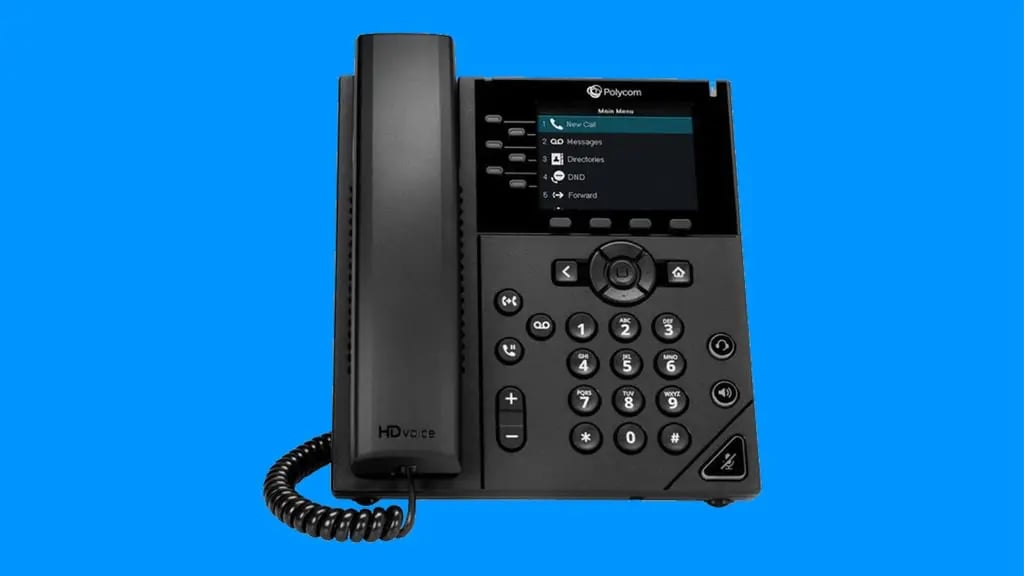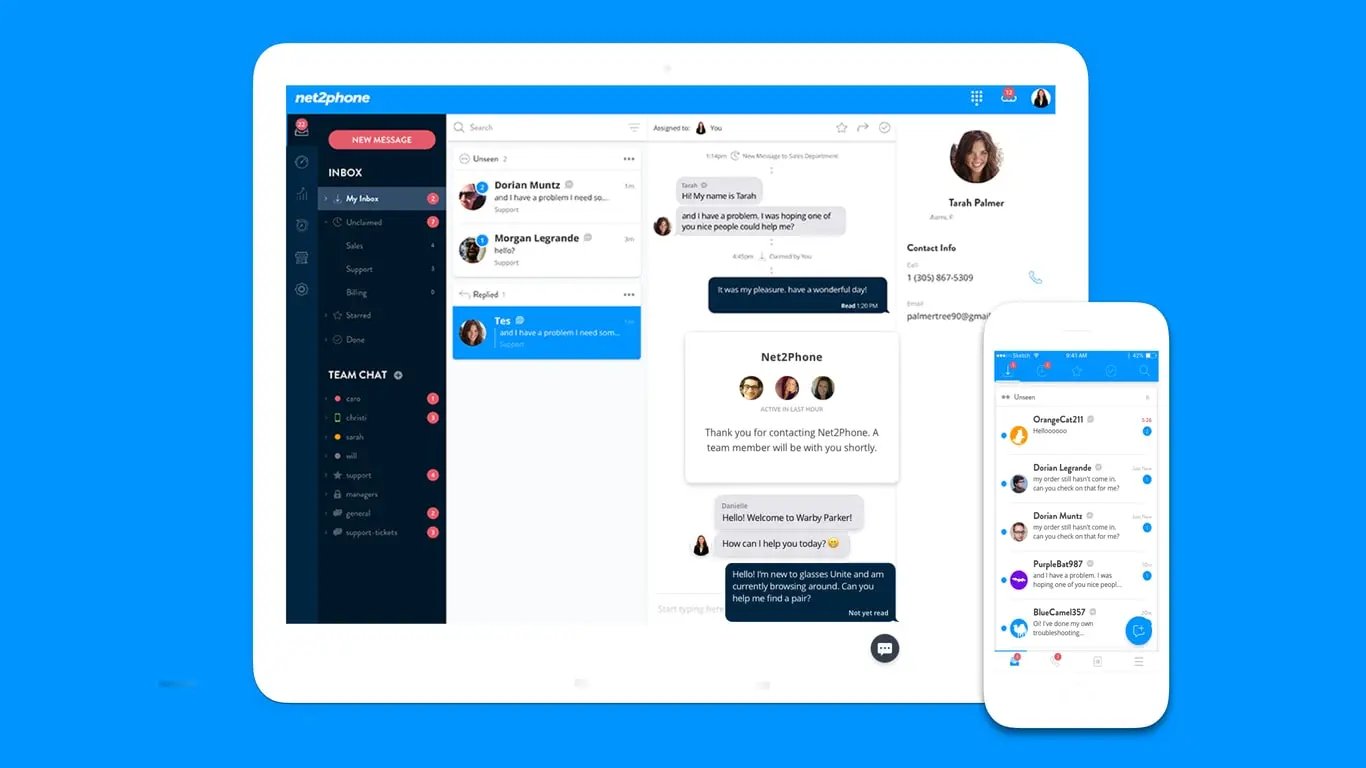
Now more than ever, we need to be able to depend on our at-home telephony services. While it’s understandable to be uncomfortable with change and therefore stick with tried-and-true landlines, Voice over Internet Protocol (VoIP) really is the future in communications.
There are more reasons to make the switch than ever before, including lower prices, improved call quality, and optimized performance. Plus, as a consolidated system that uses your internet service rather than phone lines, there’s less maintenance or downtime to worry about.
Related: Why Switching to VoIP is Essential for Your Business?
With that said, here’s how to set up a VoIP phone at home and get the most out of this innovative technology. Many home and business owners have been making the switch and not regretting it, so don’t miss out!
How Is a VoIP Phone System Different?
Let’s quickly go over the key differences between traditional landlines vs. VoIP phone systems in terms of the setup itself.
Landlines connect to the Public Switched Telephone Network (PSTN), meaning your incoming and outgoing calls are fielded through the phone provider of your choosing.
With VoIP, however, you instead make and receive calls through your internet provider; call audio is transmitted as high-quality data and transferred through the PSTN over your network, securely and quickly.
The Essentials Components You’ll Need
To start things off, let’s go over each of the important components you’ll need:
- A broadband internet connection (dial-up cannot handle the bandwidth VoIP requires)
- A dedicated VoIP adapter for use with traditional analog phones
- A VoIP service package from a dedicated, trusted provider such as net2Phone
This is the bare minimum required to get your home VoIP system up and running if you’re going to take calls on a traditional phone intended for a landline.
Setting Up a VoIP Phone at Home or in Your Office
The process is relatively simple. Setting up a VoIP phone system at home or in your office requires several steps, including testing the internet connection, selecting a provider, setting up equipment, configuring the system, and testing the system. Here's a step-by-step guide:
Step 1: Test the internet connection
Testing the internet connection before switching to VoIP is crucial to ensure that the VoIP phone system will work properly and provide good call quality. VoIP relies on the internet to transmit voice data, and any issues with the internet connection can result in poor call quality, dropped calls, or other problems. Here are some reasons why testing the internet connection is important for VoIP:
Bandwidth: VoIP requires a certain amount of bandwidth to transmit voice data without interruption. Testing the internet connection can help determine if the bandwidth is sufficient for VoIP calls.
Latency: Latency, or the delay in transmitting data over the internet, can affect the quality of VoIP calls. Testing the internet connection can help determine if latency is within an acceptable range to make and receive VoIP calls.
Jitter: Jitter refers to variations in the delay of data transmission over the internet. High jitter can result in choppy, distorted, or delayed audio. Testing the internet connection can help determine if jitter is within an acceptable range for VoIP calls.
Packet loss: Packet loss occurs when data packets are lost during transmission over the internet. Even small amounts of packet loss can affect the quality of VoIP calls. Testing the internet connection can help determine if packet loss is within an acceptable range for VoIP calls.
Related: What Does VoIP Call Mean?
Step 2: Select a VoIP provider
Research and choose a VoIP provider that meets your personal or business needs, such as pricing, features, call quality, and reliability.
Features: Consider the features offered by the VoIP provider, such as call routing, call forwarding, voicemail, conferencing, and mobile integration. Choose a provider that offers the features your home VoiP phone system needs to operate effectively. Check the 40+ VoIP Features to look for from your cloud phone system provider.
Call Quality: Ensure that the VoIP provider has a reputation for delivering high-quality calls, with no or minimal latency, jitter, or packet loss. Look for providers that use Quality of Service (QoS) technology to prioritize voice traffic and minimize disruptions.
Reliability: Choose a VoIP provider with a reliable network and minimal downtime. Look for providers that offer redundancy and failover systems to ensure continuity of service.
Scalability: Consider the scalability of the VoIP provider, which refers to its ability to grow or shrink in line with your business needs. Look for providers that offer flexible pricing plans and allow you to add or remove users easily.
Customer Support: Choose a provider that offers good customer support, with a responsive and knowledgeable support team available 24/7. Look for providers that offer multiple support channels, such as phone, email, and chat.
Cost: Consider the cost of the VoIP provider, including setup fees, monthly fees, and per-minute charges. Look for providers that offer transparent pricing and no hidden fees. Compare pricing plans from different providers to ensure you are getting the best value for your money.
Reputation: Research the VoIP provider's reputation in the market, including customer reviews and ratings. Look for providers with a good track record of delivering high-quality service and customer satisfaction.
Step 3: Choose a phone

When choosing a VoIP phone, there are several factors to consider to ensure you get the right device for your needs. Here are some key considerations:
Hardphones
Compatibility: Check if the VoIP desk phone is compatible with your VoIP service provider. Some providers may have a list of recommended devices that are compatible with their service. net2phone offers free desk phones to their customers.
Features: Consider the features you need in a VoIP phone, such as call hold, transfer, conferencing, and voicemail. Look for devices that offer the features you require to operate effectively.
Display: Look for a device with a clear, easy-to-read display that shows call information, caller ID, and other important details.
Audio Quality: Choose a VoIP phone with good audio quality, with features like noise cancellation and echo reduction to ensure clear communication.
Ease of Use: Look for a device with an intuitive user interface that is easy to navigate and use. Consider the size and placement of buttons, the quality of the handset, and any other ergonomic features.
Cost: Consider the cost of the VoIP "hardphone", including the upfront cost and any ongoing fees. Look for devices that offer good value for money while still meeting your needs.
Support: Consider the availability of customer support for the VoIP hardphone, including firmware updates, technical support, and documentation. Look for devices with good support options to ensure you can get help if you need it.
Related: What are VoIP Phones?
Softphones

What if you don’t want physical hardware for handling your calls other than, say, a laptop or tablet?
Unlike traditional landlines, VoIP phone is highly flexible and supports what are known as softphone connections. This involves using a dedicated phone app to make and receive calls, similar in design and execution to today’s popular video chat solutions.
This can help you cut down on upfront costs, which is particularly important when working from home. You can also skip the cost of a VoIP adapter this way.
Step 4: Set up the equipment & configure the phone system
Set up your VoIP phone and other equipment, such as a router or switch, following the manufacturer's instructions. You may need to connect your phone to an Ethernet cable or Wi-Fi network to connect to the internet.
Log in to your VoIP provider's web portal to configure your system. You'll need to set up features such as voicemail, call forwarding, auto-attendant, and virtual phone numbers. You'll also need to configure your phone's settings, such as the language, time zone, and call forwarding options.
Related: What is a Virtual Phone Number?
By choosing net2phone, you don’t need to wait weeks, days, or even hours for your new phone system. Installation takes only a few minutes, with no downtime or additional IT support.
Step 5: Choose the phone number or transfer your existing phone numbers

When setting up a VoIP phone system, you have the option to choose a new phone number or transfer your existing phone numbers. Here are some factors to consider when making this decision:
Business Needs: Consider your business needs and the importance of your existing phone number. If you have a well-established phone number and it's critical to your business, transferring your existing number may be the best option.
Geographic Location: If you're expanding your business into a new geographic location, it may be more advantageous to choose a new phone number in that area code to help establish a local presence.
Marketing and Branding: If your phone number is a critical part of your brand and marketing efforts, transferring your existing phone number may be more beneficial, as it will maintain continuity and consistency across your communications.
Cost: Consider the cost of transferring your existing phone number versus choosing a new phone number. In some cases, transferring a phone number may incur additional fees or charges.
Portability: Check if your existing phone number is portable, meaning it can be transferred to a new carrier or VoIP provider. If it is not portable, choosing a new phone number may be the only option.
Timing: Consider the timing of your decision to choose a new phone number or transfer your existing number. Transferring a phone number can take several weeks or even months, so it's important to plan accordingly.
Types of phone numbers
Local phone numbers - are telephone numbers that are associated with a specific geographic location or region. They are typically used by businesses and individuals to establish a local presence and to make it easy for customers and contacts in the area to reach them.
When setting up a VoIP phone system, you can choose a local phone number that corresponds to the geographic location of your business or target audience. This can help you establish a local presence, build credibility, and make it easy for customers and contacts in the area to reach you.
Toll-free numbers - are telephone numbers that allow callers to reach a business or individual without incurring any long-distance charges. Instead, the cost of the call is borne by the owner of the toll-free number.
When setting up a VoIP phone system, you can obtain a toll-free number to make it easy for customers and contacts to reach you without incurring long-distance charges. Toll-free numbers are typically used by businesses that want to establish a national or international presence, or that operate in industries where long-distance calls are common.
Vanity numbers - are telephone numbers that spell out a word or phrase using the letters assigned to each digit on the phone keypad. They are designed to be easy to remember and help businesses establish a memorable brand identity.
When setting up a VoIP phone system, you can obtain a vanity number that corresponds to your business name, industry, or marketing message. For example, a plumbing business might choose a vanity number like 1-800-PLUMBER, while a law firm might choose a number like 1-888-LAWYERS.
Step 6: Test the system
Test your VoIP phone system by making test calls, sending test emails, and testing other features such as voicemail and call forwarding. Make sure the call quality is clear and that all features are working correctly.
Step 7: Train Users
Train your users on how to use the VoIP phone system, including how to make and receive calls, use features, and troubleshoot common issues.
Assigned a net2phone Customer Success Manager, net2phone provides comprehensive training to each client to ensure they are prepared to optimize their new solution. Within one day, net2phone provided one-on-one training to every remote worker, and both office locations to ensure everybody was up and running.
Serve as a resource for clients, providing technical assistance and ongoing training tailored to their needs. net2phone designated a single point of contact throughout the deployment of services to assist with learning
Step 8: Monitor and Maintain
Monitor your VoIP phone system to ensure it's running smoothly and troubleshoot any issues that arise. Regularly update your system and review your usage to ensure you're getting the most out of your VoIP phone system.
Why Choose net2phone for Your Home VoIP Setup?
Our team offers all the above features and more, using a carrier-grade platform designed for peak performance efficiency and uptime.
In addition, we offer net2phone Huddle, a streamlined conferencing alternative with real-time connection quality, recurring call scheduling, screen sharing, video sharing, mobile integration, and many more handy features for remote workers!
In fact, we’re including Huddle with our Remote packages for a limited time at no extra cost, enabling you to get more done with a simplified, better-performing solution. Plus, get free calling to over 40 countries and free desk phones, helping you save further on a modern, more efficient system!
Want to learn more about the benefits of switching from landlines to a modern communications solution? We’re happy to help at net2phone. Contact us today to get in touch with our friendly team of VoIP experts!




